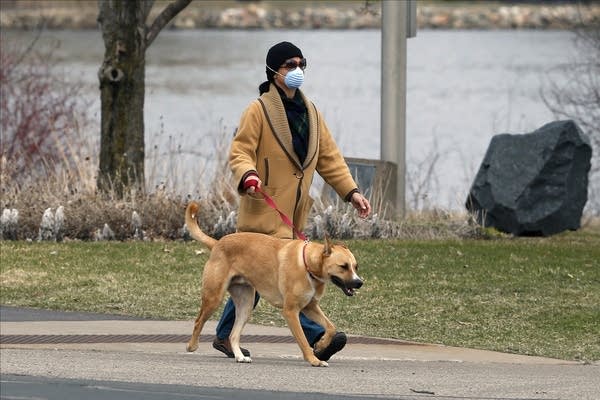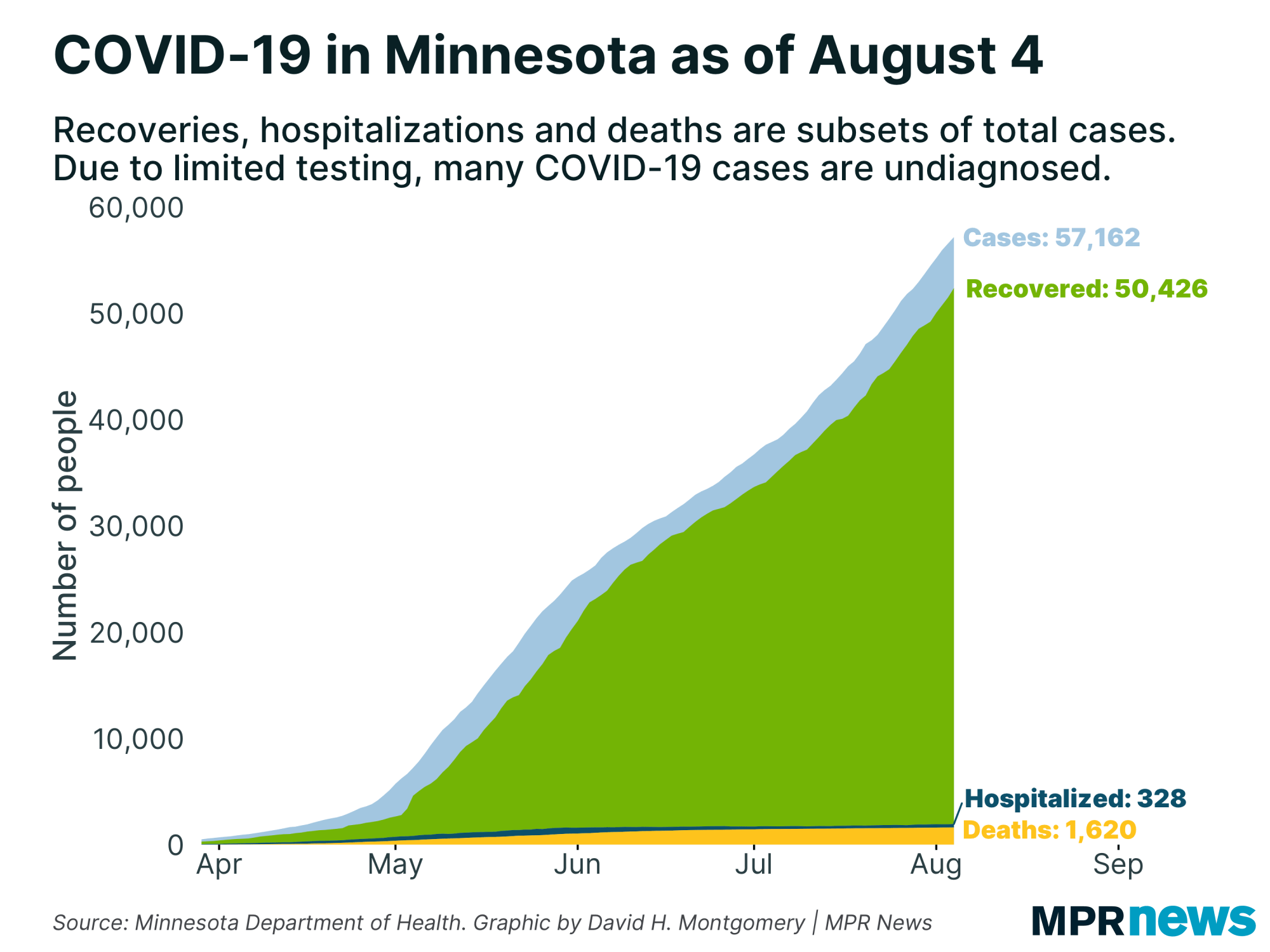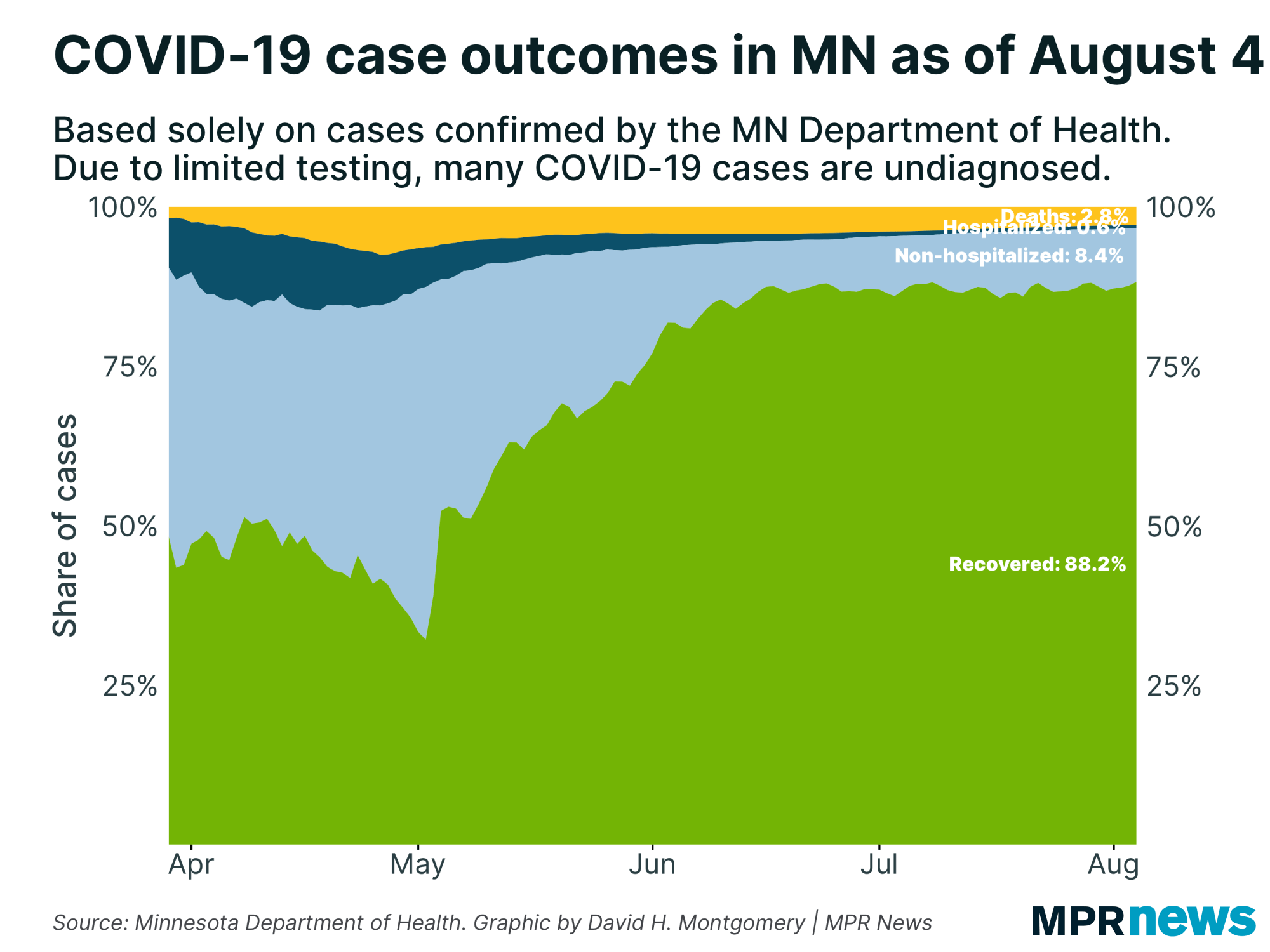April 7 update on COVID-19 in MN: 34 dead, 64 in ICU; Walz eyes 'refined' stay-home order

Go Deeper.
Create an account or log in to save stories.
Like this?
Thanks for liking this story! We have added it to a list of your favorite stories.
Updated 8:23 p.m.
Gov. Tim Walz offered a glimmer of hope Tuesday on the arc of COVID-19 cases even as he urged Minnesotans to continue keeping their public distance to check the disease’s spread and signaled he’ll extend his stay-at-home order, with some tweaks, beyond Friday.
“What we’re doing is working,” Walz told reporters, adding that Minnesota has a “chance to avoid the worst” of what’s happened in other parts of the United States. Still, he emphasized that state leaders continue to prep for a surge of hospitalizations and cautioned against a false sense of security.
Without providing details, he said his updated stay-at-home order, expected to be posted Wednesday, will “continue to do a lot of the things we’re doing, but I think our plan will be much more refined. I think that’s what a lot of Minnesotans are asking for.”

Walz’s comments came hours after the state Health Department reported deaths linked to COVID-19 in Minnesota rose to 34, up four from Monday, with 64 people now in intensive care. The total number of cases jumped to 1,069, up 83 from Monday.
Turn Up Your Support
MPR News helps you turn down the noise and build shared understanding. Turn up your support for this public resource and keep trusted journalism accessible to all.
It was the largest single-day jump in Minnesota cases since the first case was confirmed just a month ago. In the past week, the number of intensive care patients has more than doubled while the count of dead has nearly tripled.

State officials have identified more than two dozen sites that could become makeshift hospitals and accommodate about 2,700 beds, Joe Kelly, the state’s emergency management chief, said. He said he’s hoping to get some of those sites prepared soon.
Beyond the updates on cases and deaths, the Health Department Tuesday noted:
Among those who have died in Minnesota, ages run from 58 to 100. Of the four newly disclosed deaths, two were in Hennepin County with one each in Winona and Dakota counties.
More than one-third of COVID-19 cases are now considered to have originated from community spread, the greatest likely source of exposure to this point.
Martin County on the Minnesota-Iowa border continues to account for the largest number of cases outside of the Twin Cities metro area and Rochester. The county has seen 34 cases and four deaths.
Sixty-four of 87 Minnesota counties have at least one confirmed case. That now includes Roseau and Swift counties.
Nearly 300 Minnesota health care workers have tested positive for the disease, said Kris Ehresmann, the state’s infectious disease director.
Despite the rising numbers of cases, hospitalizations and deaths, Health Commissioner Jan Malcolm on Tuesday said a key metric — Minnesota’s rate of doubling of COVID-19 cases — has slowed. Case counts are doubling every eight days now; they had been doubling every one or two days before March 18.
Minnesota has one of the lowest per-capita coronavirus infection rates in the country, state officials note. Despite the increase in hospitalizations, the state says just over half the people who’ve tested positive for COVID-19 in Minnesota have recovered to the point where they no longer need to be isolated.
Beyond the medical crisis, officials also continue to work through the steep economic problems the disease has triggered for household and state government budgets.
Steve Grove, commissioner of the state Department of Employment and Economic Development, said the state’s received 355,108 applications for unemployment benefits — about 11.4 percent of Minnesota’s total labor force. Grove said his agency was getting about 800 calls an hour for help on Monday.
Grove added that 19 percent of workers who are people of color or indigenous have applied for unemployment insurance, while nearly 10 percent of the white labor force has. Grove said his department is trying to make the system easy to access for people whose first language is not English.
Nearly half of the small business emergency loans authorized so far in Minnesota are going through lenders that focus on communities of color, Grove said. He also said that the extra $600 per week that Congress included in the federal stimulus bill is on the way and that his agency is still awaiting guidance from the U.S. Department of Labor about how to distribute those payments.
Overall, Walz acknowledged the difficulty of keeping people apart, especially as major religious holidays approach, but he continued to praise Minnesotans for sticking with the order to stay apart.
Said the governor: "There's a Minnesota way to do this and save all the lives we can save.”
For daily COVID-19 updates in your inbox, subscribe to our morning newsletter.
Developments from around the state
U of M to refund more fees, freeze tuition next year, cut some staff salaries
After hearing complaints from students, University of Minnesota officials retroactively extended the dates for which students will get refunds for some services like parking and housing they haven’t been able to use because of the COVID-19 pandemic.
The Board of Regents unanimously approved a measure on Tuesday to give some approved refunds starting from the first day students were supposed to be back after Spring break in March.
The date had been March 28, but will now be March 16 for Duluth, Rochester and Twin Cities campuses and March 23 for Crookston and Morris campuses.
The board also approved a tuition freeze for next school year and voluntary pay cuts for some staff and administrators, including President Joan Gabel. Gabel said nearly 200 members of senior leadership across five campuses have agreed to work for free for one week.
University leaders are in the process of drafting a budget for next school year that takes into account multiple scenarios for how long the COVID-19 pandemic will continue disrupting classes and campus activities.
— Nina Moini | MPR News
Fargo issues directive asking people to stay home
North Dakota is one of several states that has not implemented stay-at-home orders. But the mayor of the state’s largest city, Fargo, issued a directive on Tuesday that asks people to stay home as much as possible.
Mayor Tim Mahoney said people need avoid social gatherings and unnecessary shopping, wear masks in public and take the pandemic seriously.
"This is an order requiring our people to stay smart by staying home whenever possible to stop the spread and save lives. Make a difference now. We need you to take us seriously,” Mahoney said.
"We would rather be accused of doing too much than doing too little. We cannot be wrong on this. I'm doing what I feel is best for our community and our people. This is real and it's time for real actions by our citizens."
Neighboring West Fargo issued the same directive. The two cities are in Cass County, which has more COVID-19 cases than any other North Dakota county. While North Dakota has not ordered people to stay at home, the state has closed bars, restaurants and schools.
— Dan Gunderson | MPR News
No Shakespeare festival this summer in Winona
Winona’s annual theater festival will skip its planned performances this summer.
The Great River Shakespeare Festival has joined the long list of cultural events preempted by the COVID-19 pandemic. Organizers emphasized that they are not canceling this summer’s season, but merely postponing it to 2021.
The festival was to have opened June 20 with “The Tempest” and closed with “The Taming of the Shrew” on Aug. 2. Organizers said tickets already purchased for this year will still be good for next year.
— Eric Ringham | MPR News
Minnesota opens hotline to report bias tied to COVID-19
Minnesota has set up a hotline — 1-833-454-0148 — for people to report incidents of discrimination related to the COVID outbreak. People can also report bias tied to the pandemic using a form at the Department of Human Rights website.
Asian Americans in Minnesota and across the country say they've been subject to rising levels of discrimination during the pandemic given the early epicenter of the outbreak in China.
It's important to document these incidents, even if they don't rise to a level of a hate crime, said Bo Thao-Urabe, head of the Minnesota-based Coalition of Asian-American Leaders.
Officials still urge victims of hate crimes and violence to call the police. The FBI has warned of a likely surge in hate crimes against Asian Americans.
— MPR News Staff
Top headlines
Lawmakers pass workers’ compensation bill — with cost unresolved: The Minnesota House and Senate passed legislation Tuesday to help first responders, health care workers and others get workers’ compensation benefits if they contract COVID-19. However, lawmakers say it’s not clear how the state will pay for the expected costs.
Coronavirus fueling 'total chaos' and tough decisions for Minnesota's immigrant workers: The COVID-19 pandemic has immigrant workers and their employers calling for clarity and sanity from immigration agencies.
Grocery store inventories rebounding — except for toilet paper: Shoppers are more likely to find what they want at many Twin Cities grocery stores, now that the initial shopping frenzy ignited by COVID-19 fears has passed.
COVID-19 death certificate change stirs controversy: Instructions to count deaths from “presumed” COVID-19 cases, not just confirmed cases, are met with acceptance for some and criticism from others.
Attorney says many ICE detainees at high risk from COVID-19: More than five dozen men held at Sherburne County jail for civil immigration matters want to be released to avoid contracting the novel coronavirus.
COVID-19 in Minnesota
Health officials for weeks have been increasingly raising the alarm over the spread of the novel coronavirus in the United States. The disease is transmitted through respiratory droplets, coughs and sneezes, similar to the way the flu can spread.
Government and medical leaders are urging people to wash their hands frequently and well, refrain from touching their faces, cover their coughs, disinfect surfaces and avoid large crowds, all in an effort to curb the virus’ rapid spread.
The state of Minnesota has temporarily closed schools, while administrators work to determine next steps, and is requiring a temporary closure of all in-person dining at restaurants, bars and coffee shops, as well as theaters, gyms, yoga studios and other spaces in which people congregate in close proximity.



